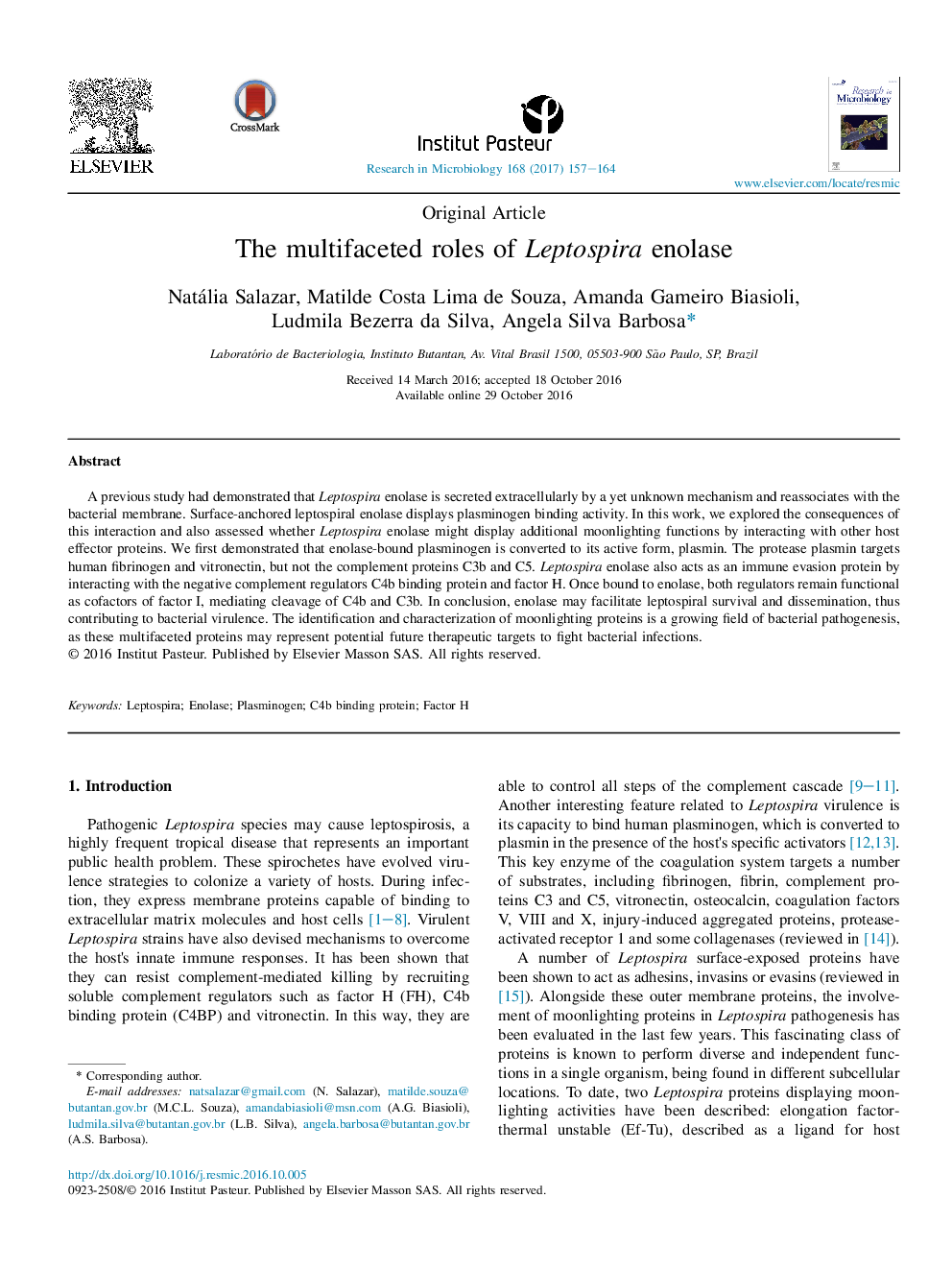| Article ID | Journal | Published Year | Pages | File Type |
|---|---|---|---|---|
| 5739810 | Research in Microbiology | 2017 | 8 Pages |
A previous study had demonstrated that Leptospira enolase is secreted extracellularly by a yet unknown mechanism and reassociates with the bacterial membrane. Surface-anchored leptospiral enolase displays plasminogen binding activity. In this work, we explored the consequences of this interaction and also assessed whether Leptospira enolase might display additional moonlighting functions by interacting with other host effector proteins. We first demonstrated that enolase-bound plasminogen is converted to its active form, plasmin. The protease plasmin targets human fibrinogen and vitronectin, but not the complement proteins C3b and C5. Leptospira enolase also acts as an immune evasion protein by interacting with the negative complement regulators C4b binding protein and factor H. Once bound to enolase, both regulators remain functional as cofactors of factor I, mediating cleavage of C4b and C3b. In conclusion, enolase may facilitate leptospiral survival and dissemination, thus contributing to bacterial virulence. The identification and characterization of moonlighting proteins is a growing field of bacterial pathogenesis, as these multifaceted proteins may represent potential future therapeutic targets to fight bacterial infections.
